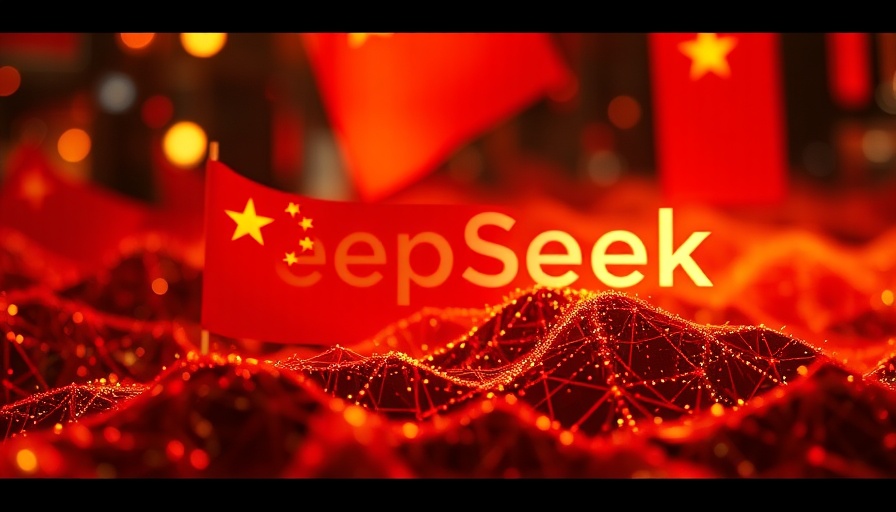
China's AI Ambitions: Riding the DeepSeek Wave
As the world hurtles towards a tech-driven future, China's fervent embrace of DeepSeek, an AI model developed by a local startup, is stirring up both excitement and concern. Introduced to the market in January 2025, DeepSeek quickly gained traction, especially after a ground-breaking open-source AI model successfully challenged global giants like Nvidia in terms of cost efficiency. With local governments racing to integrate this technology across various sectors—from drafting policy documents to responding to citizen inquiries—DeepSeek represents a bold leap in harnessing artificial intelligence for governance.
Global Warnings: Why Bucking the Trend?
However, as nations like Italy, Taiwan, and even the U.S. impose bans or restrictions on DeepSeek, questions arise about the implications of such technology, particularly relating to data security. Reports have flagged serious vulnerabilities, with experts cautioning that DeepSeek's architecture could expose sensitive user data to cyber threats. The app’s terms of service indicate that user data is stored on servers governed by Chinese law, adding an alarming layer of complexity amid ongoing allegations of Chinese espionage. Moreover, cyber security firms have raised red flags regarding the ease with which user data can be harvested and manipulated, illustrating the potential risks involved if organizations utilize this technology without caution.
The Balance Between Innovation and Security
Despite these security concerns, curiosity and 'Fear of Missing Out' (FOMO) drive many companies and government agencies to adopt DeepSeek. According to reports, around half of global customers were eager to explore its functionalities, while many others simultaneously blocked it to avoid compromising security. This mirrors findings from cybersecurity analysis, which suggests a tension between the need for innovative tech solutions and the imperative of safeguarding sensitive information.
Understanding AI Hallucinations and Their Impact
Another critical consideration is the phenomenon known as AI “hallucinations,” wherein AI systems generate incorrect or misleading information. This issue poses significant risks, particularly when AI systems like DeepSeek are used in sensitive policy-making roles. With reports stating that DeepSeek's error rates in generating factual information are unacceptably high, it's clear that there is a pressing need for stakeholders to tread carefully.
What Lies Ahead: A Fork in the Road for DeepSeek
The future could hold significant opportunities for DeepSeek, especially as AI continues to gain traction in global markets. Chinese officials are touting the technology as a means to enhance governance, but the road ahead is littered with challenges. Countries adopting the technology risk not only domestic scrutiny but also international backlash should breaches occur from AI errors or security violations. Still, the allure of an AI-powered future continues to draw interest, leaving many to ponder whether the potential benefits outweigh these considerable risks.
Final Thoughts: Act Now or Fall Behind?
For organizations considering DeepSeek, the stakes are high. It's not just about leveraging the latest tech wave but ensuring a robust understanding of the inherent risks involved in deploying AI solutions in critical areas. Balancing innovation with necessary security measures will be pivotal in navigating the murky waters of AI technology. As global conversations evolve around responsible AI use, the lessons learned from DeepSeek's rapid rise and the push to regulate its use offer essential insights into the future of AI governance.
To ensure you're staying informed about the latest in AI technology and its ramifications for real-world applications, join the conversation and explore all we have to share. The tech landscape is ever-evolving, and proactive engagement is crucial for leveraging these innovations effectively.
 Add Row
Add Row  Add
Add 




 Add Row
Add Row  Add
Add 

Write A Comment